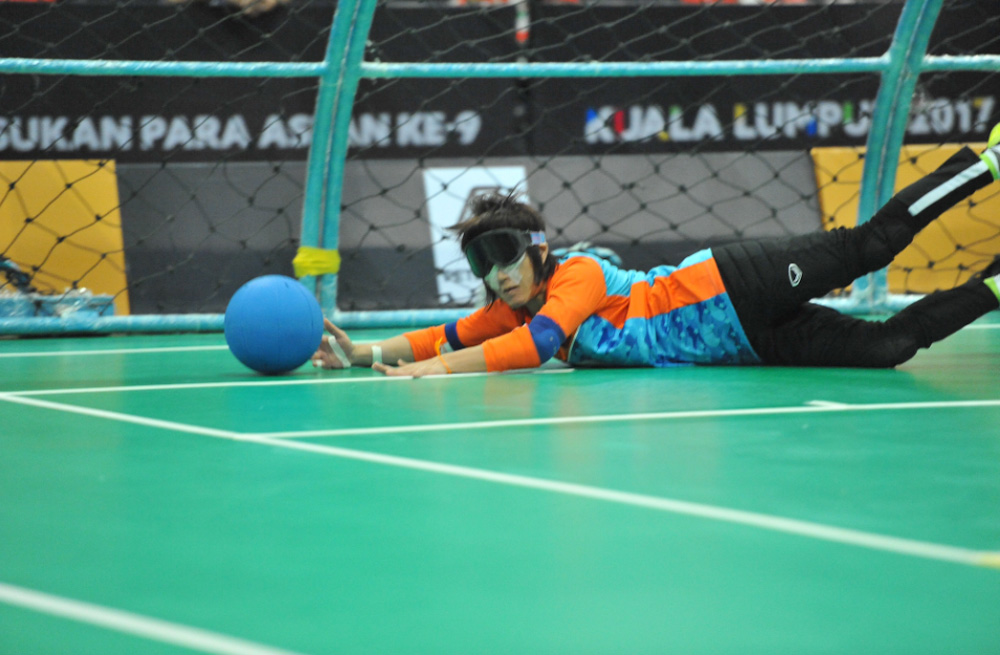Sign up for trending news and first dibs
9th ASEAN Para Games: 4 Para-Sports You May Not Know About
9th ASEAN Para Games: 4 Para-Sports You May Not Know About
The ASEAN Para Games is into its ninth edition. From goalball to powerlifting, here are four para-sports to get acquainted with.
By Kurt Ganapathy
Featured photo: Kuala Lumpur 2017

Goalball gives visually impaired athletes the opportunity to get in on the excitement of sending a ball flying into the back of a net
The ASEAN Para Games, which take place in Kuala Lumpur from September 17 to 23, sees 1,421 athletes from the 11 SEA Games Federation nations participating in 16 sports. Many of these sports – including archery, athletics and swimming – are familiar, but there are also several others that are unique to games for athletes with disabilities. Here are four of them you can check out during the Games this week.
1. Boccia
A boules sport similar to bocce, lawn bowls and petanque, the aim of boccia is to propel (throw or roll, depending on the para athlete’s ability) balls closer to a target ball than your opponent. Individuals and pairs play four ends while teams play six ends. Boccia events are mixed with fields consisting of both men and women.
An end begins with a player propelling the white target ball, called a jack, followed by their first ball. The other side then propels their first ball. After this, the side who doesn’t have their ball closest to the jack will play, propelling balls until they get closer to the jack or use up the remaining balls. This continues until each side has propelled all six balls allotted to them. The winner of the end is the side with a ball closest to the jack and they receive one point for every ball that they have closer to the jack than the closest ball propelled by the opposing side.
2. Goalball
Whether it’s football, hockey, water polo or handball, there are few things more satisfying than sending a ball flying into the back of a net. Goalball gives visually impaired athletes the opportunity to get in on the action. The sport was devised in Germany in the aftermath of World War II for the rehabilitation of veterans.
Goalball is played by two teams of three who take turns rolling or throwing a ball towards the opposing team’s goal. This special ball has bells embedded in it to allow players to identify the location and motion of the ball based on sound. Players remain in front of their goals whether they’re attacking or defending. All throws must be underarm throws and all players must wear blindfolds so that partially sighted athletes are on a level playing field with blind athletes. The team that scores the most goals at the end of two 12-minute halves wins. Ties are decided by two periods of golden goal overtime followed by penalties.
3. Powerlifting
Powerlifting at the ASEAN Para Games is all about the bench press discipline. The process is straightforward. Lying on their back, the lifter starts with the bar raised with arms fully extended. They then lower the bar to their chest and raise it again with arms fully extended until the referees indicate that the lift is good. There are 19 gold medals up for grabs across 10 weight classes for women and nine for men.
4. Sitting volleyball
Sitting volleyball has many similarities to volleyball, but it is played on a smaller court with a lower net. Players are also permitted to block serves in this version of the sport. When making contact with the ball for a serve, block or attack hit above the net level, a player must have part of their buttocks or torso (from the shoulders down) in contact with the ground.
Catch all the action on YouTube with daily highlights at 9pm on Okto. Or get involved with para-sports – volunteer with the Singapore Disability Sports Council. Donations are also welcome.
Read More: SEA Games 2017 Kuala Lumpur: A Country By Country Guide
TAGS
Tags:







